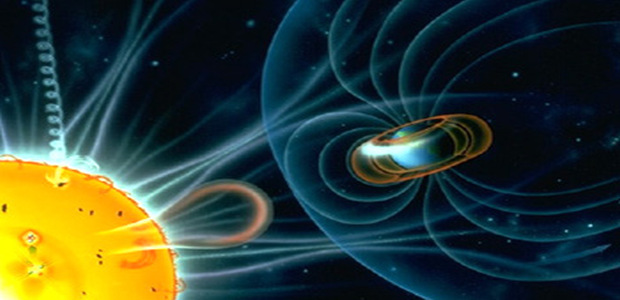Solar flares are nothing but powerful bursts of radiation which are emitted by the sun. These flares can conjure what is called as a geomagnetic storm which can have tremendous impact on our planet Earth. In recent times, the sun has been increasingly transmitting solar flares and there were concerns that they may hit the Earth with great intensity.
What is a geomagnetic storm?
“Occasionally the Sun will send off a huge burst of charged particles that follow the magnetic field lines of the Sun. If we’re unfortunate, these lines direct them to Earth,” says Professor Craig Underwood at the University of Surrey, in the UK.
How does that affect us?
The compression of Earth’s magnetic field could overload the national grid. “When you move a magnet near a wire, you induce a current. Our magnetic field gets very strongly compressed by the charged particles and because of that, if you have a long length of wire like the national grid and you get a sudden shift of magnetic field, that induces enormous currents,” says Underwood. In 1989, a geomagnetic storm wiped out Canada’s power supply. Communications satellites are also affected, as disturbances the charged layers of the upper atmosphere can interfere with or even block microwaves.
So would just one country at a time be affected?
In the 1989 event, that happened. But a larger storm could potentially wipe out power on a global scale. A strong enough storm has the ability to create geomagnetic currents that has the capacity to disrupt power grids and throw of compasses used for navigations in a large scale.
Is there anything we can do?
“The people who run the national grid actually monitor the Sun closely and take remedial action if an event is on the way. What they tend to do, surprisingly, is turn things on – trying to use as much power as possible so that disturbance is relatively small as a percentage,” says Underwood. “But we could lose transformers and so on… These are major bits of kit, so we could lose power for considerable amounts of time.”
How often are storms that big?
Roughly every 100 years. The last to hit us was the Carrington Event, in 1859. “That was the pre-electrical age. But the kick in the magnetic field was recorded by magnetometers on the ground – the ones in Europe went off the scale,” says Underwood. A Carrington-like storm did occur in July 2012 but thankfully missed our planet. On June 12th, 2014 the Sun unleashed three solar flare bursts which were of X-Class (the most intense type of solar flare that is 10,000 times as powerful as normal background flares from the sun.)
What problems could it cause?
If you were on a flight at high altitude during a large geomagnetic storm, your cancer risk might be increased by about one in 1,000 – and astronauts are far more vulnerable. While the effects wouldn’t be lethal to us on the ground, diverted flights and loss of power could cause a lot of disruption and potentially interrupt food supplies, as well as our heating and lighting.
Geomagnetic storms can also have impact on humans due to the radiation hazards. Certain animals and birds also respond to this magnetic effect which can be seen by the change in the behavioral patterns of pigeons and whales. A geomagnetic storm of large scale could globally impact communications, navigation systems and could even damage our satellite systems. With so many systems affected this could surely lead to collateral damage. So this is quite a serious threat from the Sun, the star on which our planet depends for its survival.
-end-


































